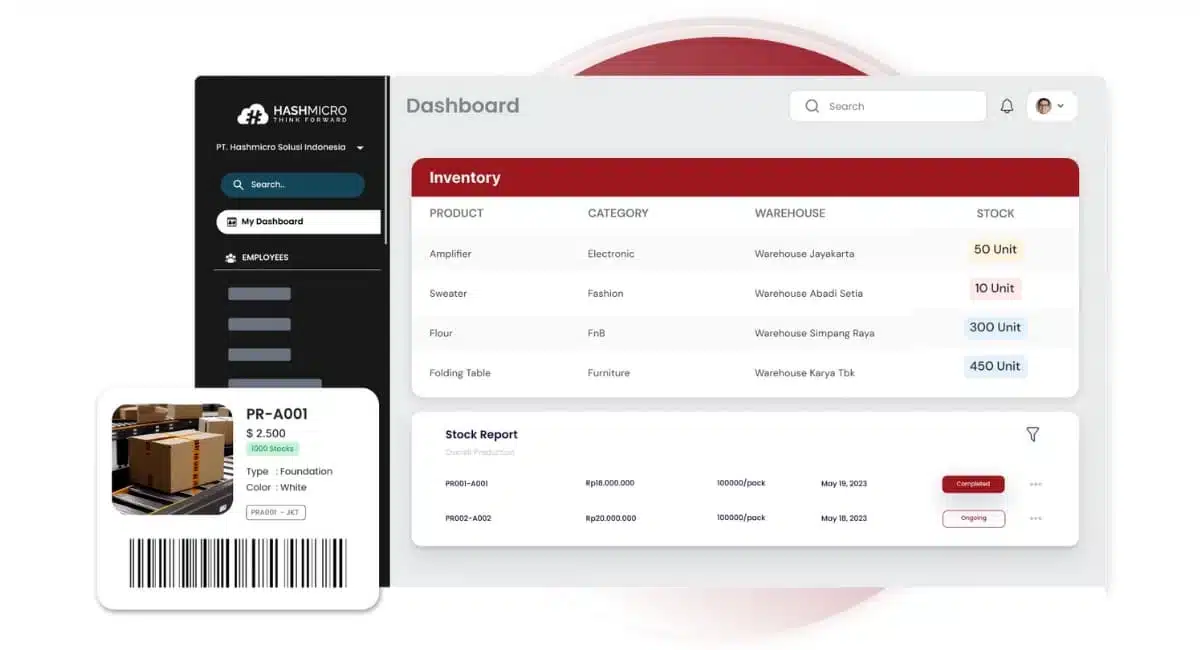Kumusta, mga kapwa ko negosyante! Feeling the pinch with inventory mishaps? Imagine never facing a “sold out” sign again, all thanks to mastering the reorder point formula. This guide is your new best friend, tailored just for the vibrant Philippine market.
It’s here to ensure your business not only survives but thrives by avoiding the common pitfalls of overstocking and understocking. Intrigued? With the right reorder point (ROP) strategy, you can fine-tune your inventory to meet demand perfectly.
Stick around to discover how these essential tweaks can revolutionize your business logistics and boost your bottom line.
Key Takeaways
|
Table of Contents

What is a Reorder Point?
A reorder point (ROP) is the critical quantity that triggers the action to replenish your inventory. It is a strategic level designed to prevent stockouts, ensuring that your business has enough stock on hand until the next batch arrives. By setting effective reorder points, you avoid the risk of running out of products, which can lead to lost sales and dissatisfied customers.
Understanding when and why to set reorder points is essential for all businesses, especially in fast-paced markets like the Philippines. Setting reorder points is not just a practice but a necessity to adapt to the rapidly changing market demands and to keep your business operations smooth and uninterrupted.
Why Are Reorder Points Important?
Reorder points are vital for maintaining the balance between too much and too little inventory. They play a crucial role in preventing stockouts, which can damage your brand reputation and customer loyalty. Similarly, effective ROP helps avoid overstocking, which ties up your capital and increases storage costs, reducing overall profitability.
Moreover, having a well-defined ROP contributes to more efficient inventory management and significant cost savings. It ensures that your business can respond promptly to customer demands without maintaining excessive stock levels, thus optimizing your cash flow and reducing inventory costs.
How to Calculate a Reorder Point
Calculating the reorder point requires understanding your business’s average daily sales and the lead time for receiving new stock. Start by determining the average daily unit sales to form the basis of your reorder calculations. Therefore, for better security, especially in unpredictable markets like the Philippines, consider adding safety stock to this equation.
The components of this calculation include:
- Average Daily Usage: Represents the average number of units sold per day, calculated based on your business’s historical sales data.
- Lead Time: The total time taken from placing the order to receiving the stock, which includes supplier processing time and shipping.
- Safety Stock: Additional inventory kept on hand to protect against fluctuations in demand or unexpected delays in supply, ensuring you can meet customer demand without interruption.
By accurately calculating these components, businesses can set reorder points that are both efficient and responsive to market dynamics. This approach ensures that there is always enough stock on hand to meet customer demand, while also minimizing the risk of excess inventory that ties up capital and space.
Reorder Point Formula
The basic formula for determining the reorder point (ROP) is ROP = (Average Daily Usage Rate × Lead Time) + Safety Stock. This formula helps businesses calculate how much inventory to order and when to order it, ensuring that they do not run out of stock.
For example, if a company has an average daily sale of 100 units, a lead time of 7 days, and maintains a safety stock of 200 units, the reorder point would be calculated as follows:
This means when your inventory reaches 900 units, it’s time to reorder. This calculation with safety stock ensures you have a buffer against unexpected delays or spikes in demand, which is crucial for maintaining customer satisfaction and operational efficiency.
Reorder Point Strategies
Different strategies for setting and adjusting reorder points can significantly enhance inventory management. One effective strategy is the periodic review system, where reorder points are adjusted based on changes in demand patterns and supply chain conditions.
This approach is particularly relevant in the Philippines, where economic activities can fluctuate significantly due to seasonal trends and economic policies. Tips for optimizing reorder points include using technology to track inventory and sales patterns levels in real-time, and regularly consulting with suppliers to understand potential lead time changes.
These practices help businesses adapt their reorder points to current market conditions, ensuring they are always aligned with operational needs and market opportunities.
How Are Reorder Points Used?
Reorder points find practical application in various business scenarios, from retail management to manufacturing. In retail, ROP helps store managers maintain shelf stock levels to meet customer demand consistently.
For manufacturers in the Philippines, reorder points ensure that production lines are not halted due to a lack of raw materials, facilitating smooth operations and timely product deliveries.
By utilizing inventory management software, businesses can automate reorder triggers to streamline their inventory processes. This automation ensures timely reordering, reducing the administrative burden and allowing business owners to focus on growth and expansion strategies.
HashMicro’s Inventory Software for Easier ROP Calculation
HashMicro’s inventory software simplifies the process of calculating reorder points, making it more efficient and less prone to errors, especially critical for businesses operating in dynamic markets like the Philippines.
This software automates the tracking of average daily sales and accurately calculates lead times and safety stock requirements based on historical data and predictive analytics.
Key features of HashMicro that enhance reorder point calculations include:
- Run Rate Reordering Rules: Automatically adjust reorder points based on real-time sales velocity to maintain optimal inventory levels.
- RFID Warehouse Rack Stock In-Out Automation: Tracks inventory movements in real-time, ensuring accurate data for setting reorder points.
- Lead Time Management: Monitors supplier delivery times to adjust reorder points dynamically, accounting for variations in lead times.
- Stock Optimizer per Warehouse: Analyzes stock levels across multiple locations to optimize reorder points and reduce carrying costs.
- Safety Stock Optimization: Uses statistical analysis to calculate the ideal safety stock levels, minimizing the risk of stockouts while avoiding excess inventory.
By integrating these features, HashMicro’s Inventory streamlines setting reorder points and adapts to your business’s unique challenges and market conditions. Few solutions compare to HashMicro’s effectiveness in maintaining optimal inventory levels and improving operational efficiency.
Conclusion
Mastering the reorder point formula is essential for effective inventory management, helping businesses avoid both stockouts and excess inventory. By understanding and applying key components like average daily usage, lead time, and safety stock, Filipino business owners can significantly enhance operational efficiency and customer satisfaction.
HashMicro’s inventory software streamlines this process with features like automated reorder points, real-time tracking, and lead time management, ensuring efficient inventory processes. Try it yourself! Sign up for our free demo to experience the benefits firsthand.
Frequently Asked Questions
-
What is the meaning of order point?
The reorder point is the specific stock level at which an order must be placed. This is used to replenish inventory before it runs out, ensuring continuous availability.
-
When to use reorder point planning?
Businesses usually use reorder point planning when managing inventory. This is to prevent stockouts, particularly in businesses with fluctuating demand or longer lead times.
-
What is the purpose of the reorder point?
The purpose of the reorder point is to maintain a seamless supply of inventory by triggering timely reorders. Thus avoiding both stockouts and overstock situations.



























